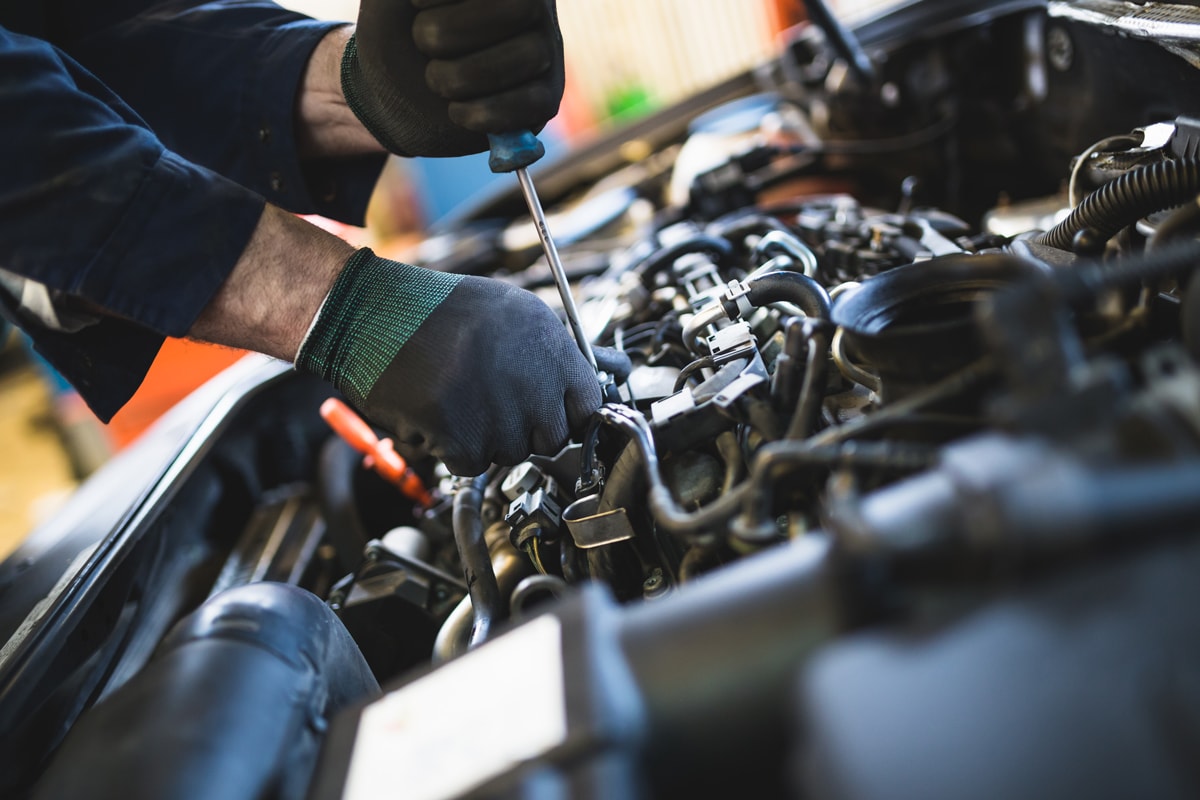All Categories
Featured
The timing belt is an essential element of your engine, responsible for synchronizing the activity of numerous engine components, such as the crankshaft and camshaft. This makes sure the engine's shutoffs close and open at the correct times during the burning cycle. While the timing belt might not be something you think of usually, overlooking its upkeep can result in substantial engine damage and costly repair services. Below's why timing belt substitute is necessary for your automobile's long life and performance.
What Is a Timing Belt and Exactly How Does It Function? The timing belt is a rubber or composite product belt that connects the crankshaft to the camshaft in an interior burning engine. The camshaft regulates the opening and closing of the engine's intake and exhaust shutoffs, and it needs to be timed flawlessly with the motion of the pistons in the engine. The timing belt makes certain that these components remain in sync, allowing the engine to run efficiently.
If the timing belt stops working or ends up being worn, the camshaft and crankshaft will certainly no longer be synchronized, which can trigger the engine's shutoffs to strike the pistons. This causes disastrous engine damages and typically needs costly fixings or even an engine substitute.
Why Is Timing Belt Replacement Important? With time, the timing belt can put on down due to friction, heat, and basic engine wear. While it may feel like a little concern, a defective timing belt can bring about serious engine issues. Here's why timely replacement is crucial:
Preventing Engine Damage: As stated, a damaged or sliding timing belt can trigger the engine's valves and pistons to collide. This leads to curved shutoffs, damaged pistons, and in serious situations, a full engine failure. Changing the timing belt prior to it breaks can avoid this pricey damages.
Maintaining Engine Performance: A worn-out timing belt can interrupt the synchronization of the engine parts, reducing overall engine performance. Replacing the belt aids preserve ideal engine feature, making sure smooth procedure, improved fuel performance, and far better efficiency.
Preventing Unanticipated Failure: A damaged timing belt can leave you stranded on the side of the roadway, causing a major inconvenience. By replacing the timing belt at the recommended periods, you can stay clear of the threat of an unexpected breakdown, specifically in the center of a lengthy journey or when you the very least anticipate it.
![]()
Conserving Money over time: While timing belt substitute can appear like an expense you could wish to put off, it's much less costly than the cost of fixing or replacing a harmed engine. The substitute expense is relatively economical contrasted to the considerable fixings called for if the timing belt breaks. Positive maintenance can save you countless bucks in fixings and preserve your automobile's value.
When Should You Change the Timing Belt? The timing belt substitute routine can differ depending upon your automobile's make and design. In basic, many makers recommend changing the timing belt every 60,000 to 100,000 miles. However, it's constantly best to consult your proprietor's manual or a trusted auto mechanic for specific recommendations for your automobile.
Signs that your timing belt may need replacement include uncommon engine sounds such as ticking or yawping, difficulty beginning the engine, or a recognizable reduction in engine efficiency. If you experience any one of these symptoms, it is very important to have the timing belt examined right away.
![]()
Final thought. Replacing the timing belt at the advised intervals is a vital component of maintaining your engine's wellness and ensuring that your automobile runs smoothly. A busted timing belt can lead to costly repair services, engine failure, and unexpected break downs, which can be prevented with correct upkeep.
What Is a Timing Belt and Exactly How Does It Function? The timing belt is a rubber or composite product belt that connects the crankshaft to the camshaft in an interior burning engine. The camshaft regulates the opening and closing of the engine's intake and exhaust shutoffs, and it needs to be timed flawlessly with the motion of the pistons in the engine. The timing belt makes certain that these components remain in sync, allowing the engine to run efficiently.
If the timing belt stops working or ends up being worn, the camshaft and crankshaft will certainly no longer be synchronized, which can trigger the engine's shutoffs to strike the pistons. This causes disastrous engine damages and typically needs costly fixings or even an engine substitute.
Why Is Timing Belt Replacement Important? With time, the timing belt can put on down due to friction, heat, and basic engine wear. While it may feel like a little concern, a defective timing belt can bring about serious engine issues. Here's why timely replacement is crucial:
Preventing Engine Damage: As stated, a damaged or sliding timing belt can trigger the engine's valves and pistons to collide. This leads to curved shutoffs, damaged pistons, and in serious situations, a full engine failure. Changing the timing belt prior to it breaks can avoid this pricey damages.
Maintaining Engine Performance: A worn-out timing belt can interrupt the synchronization of the engine parts, reducing overall engine performance. Replacing the belt aids preserve ideal engine feature, making sure smooth procedure, improved fuel performance, and far better efficiency.
Preventing Unanticipated Failure: A damaged timing belt can leave you stranded on the side of the roadway, causing a major inconvenience. By replacing the timing belt at the recommended periods, you can stay clear of the threat of an unexpected breakdown, specifically in the center of a lengthy journey or when you the very least anticipate it.

Conserving Money over time: While timing belt substitute can appear like an expense you could wish to put off, it's much less costly than the cost of fixing or replacing a harmed engine. The substitute expense is relatively economical contrasted to the considerable fixings called for if the timing belt breaks. Positive maintenance can save you countless bucks in fixings and preserve your automobile's value.
When Should You Change the Timing Belt? The timing belt substitute routine can differ depending upon your automobile's make and design. In basic, many makers recommend changing the timing belt every 60,000 to 100,000 miles. However, it's constantly best to consult your proprietor's manual or a trusted auto mechanic for specific recommendations for your automobile.
Signs that your timing belt may need replacement include uncommon engine sounds such as ticking or yawping, difficulty beginning the engine, or a recognizable reduction in engine efficiency. If you experience any one of these symptoms, it is very important to have the timing belt examined right away.

Final thought. Replacing the timing belt at the advised intervals is a vital component of maintaining your engine's wellness and ensuring that your automobile runs smoothly. A busted timing belt can lead to costly repair services, engine failure, and unexpected break downs, which can be prevented with correct upkeep.
Latest Posts
The Catering Experts at Canyon Crest – Delicious Menus for Every Occasion
Published Jan 07, 25
1 min read
Canyon Crest Event Center – Riverside’s Best Venue for Every Occasion
Published Jan 07, 25
2 min read
Roofing Done Right with A-Abel Roofing
Published Jan 07, 25
1 min read